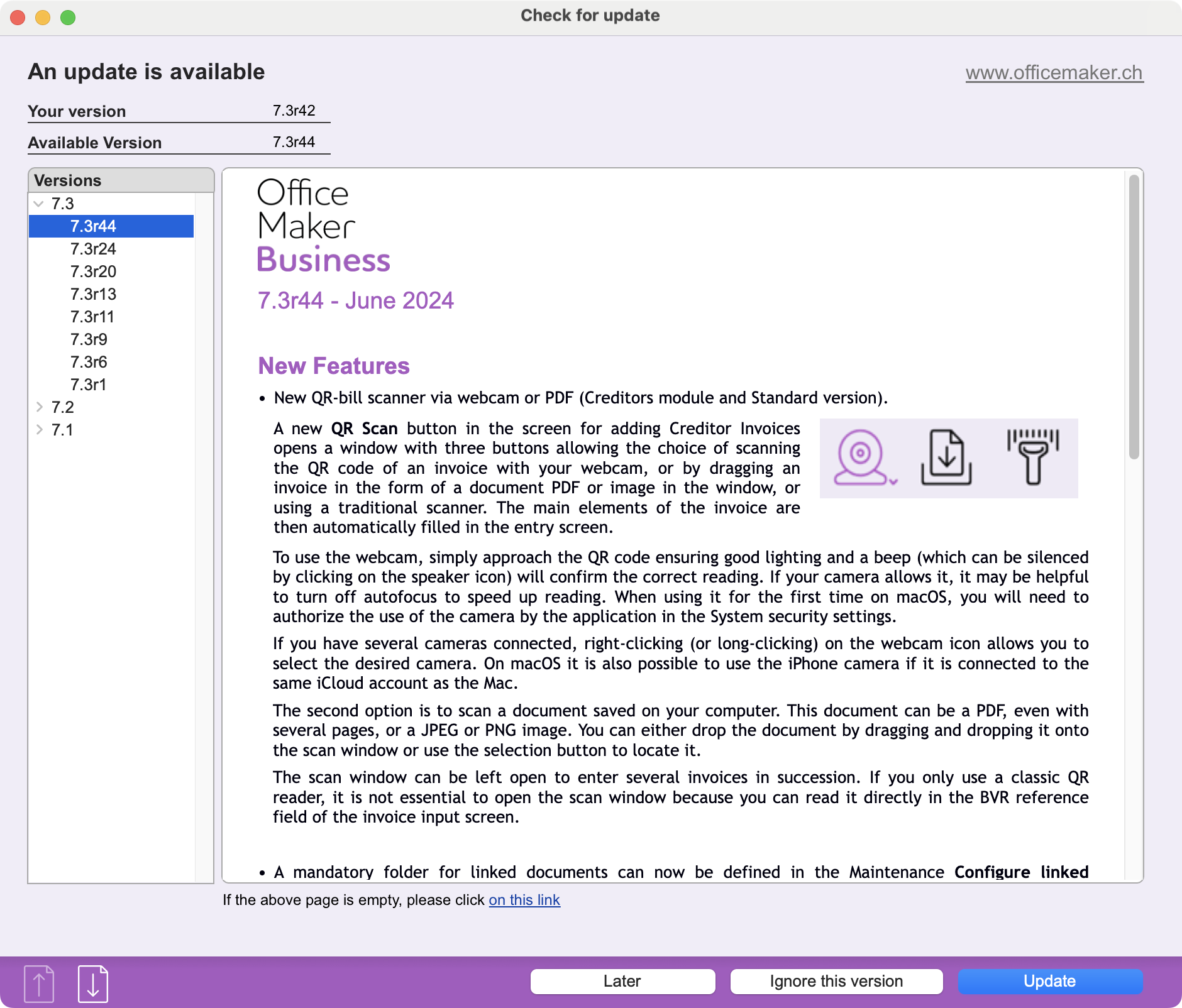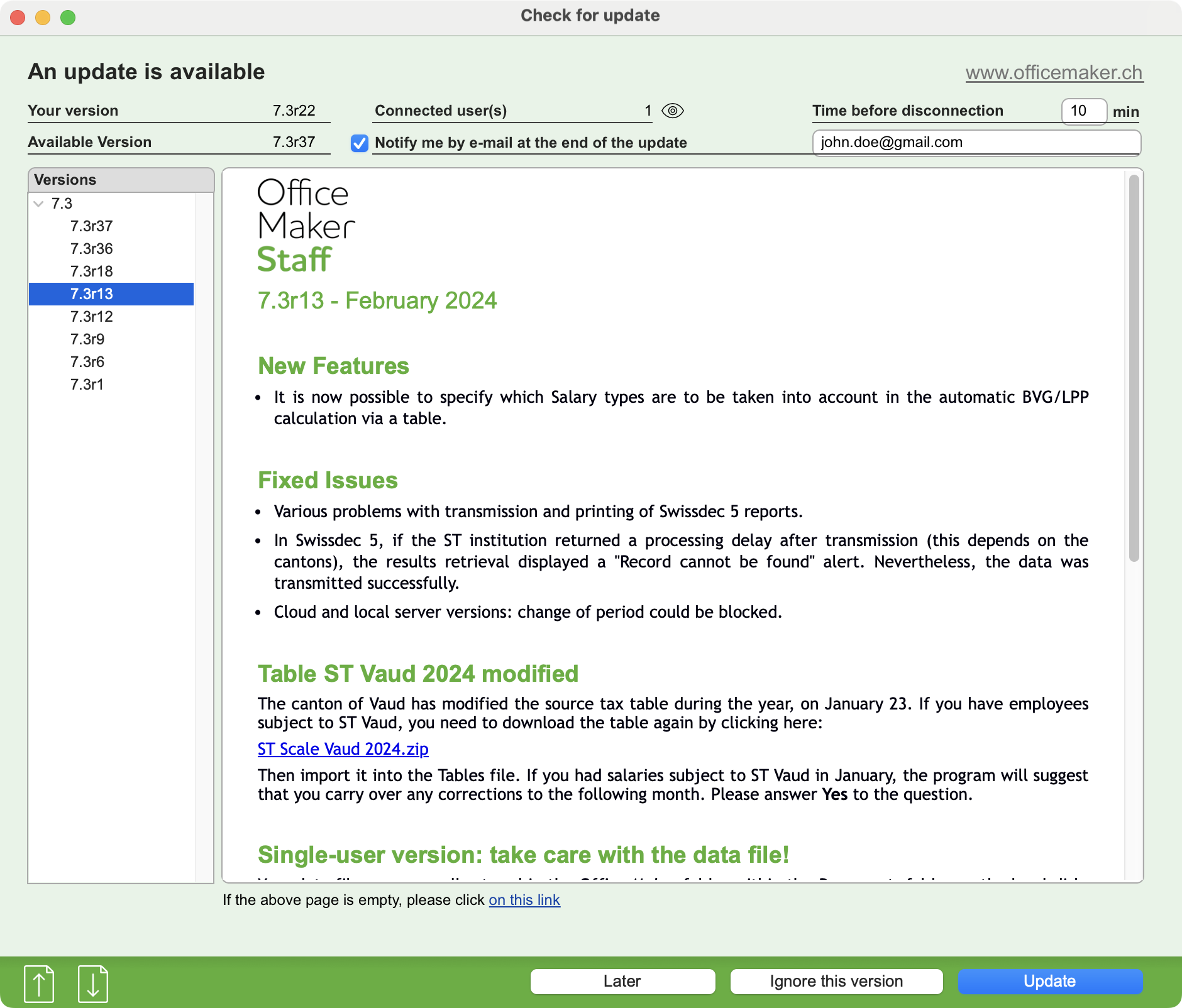How automatic updates work
Your software features an automatic update function to make users' work easier.
Here's how it works:
Updating a single-user version
When the software starts up, a request is sent to our update server. If a new version is available, and the user has a valid update subscription, a dialog box appears, suggesting that the user installs it. It is also possible to call the Help>Check for update command to check for its availability.

If the user starts the update, the software saves the current data file, downloads the new version and quits. A utility program then starts, installs the new version, deletes the old version and starts the new version, which updates the current data file. Finally, a message informs the user that the update was successful.
If an antivirus program is installed on the workstation, we recommend either temporarily deactivating it (during the update), or introducing an exception to monitoring for the folder containing the Office Maker / BiblioMaker application.
Another precaution concerns the folder containing the application to be updated, which must have read/write rights for the user account performing the update (usually an account with computer administration rights).
Should the automatic update fail, please read this article .
Updating a multi-users version
When the client software is started, a request is sent to our update server. If a new version is available and the user has a valid update subscription, a dialog box is displayed, suggesting that the user installs it. It is also possible to call up the Help>Check for update command to check its availability.

The update dialog allows you to define the client workstations disconnection time, as well as the e-mail address of the person to be notified at the end of the update operation. Most of the updating is carried out on the server. This is why a number of precautions must be taken before starting the update:
- Notify the IT manager so that he can intervene on the server in the event of a problem.
- Warn other users of the software that they will be interrupted for a few minutes (to avoid this interruption, it's best to carry out the update outside employees' working hours).
- Allow sufficient time for this operation (usually between 5 and 10 minutes, but it may take longer depending on the speed of your Internet connection).
- Ensure that the user account has read/write rights to the folder containing the client software, so that any updates are not blocked (this is generally the case for an account with computer administration rights).
Once the update has been started, the operation can be broken down into several stages :
- The client software instructs the server software to update itself.
- The server software downloads the new version from our update server.
- The server software performs a backup of the current data file.
- A countdown timer appears on the workstations of connected users to let them finish their work. Once this time has elapsed, users who have not logged off are disconnected from the server.
- The server software quits. A utility program installs the new version, transfers various auxiliary files from the old version to the new one, deletes the old version and starts the new version, which updates the current data file.
- An e-mail is sent to inform the user who started the update that a reconnection to the server is possible.
- Users start up their client software. Depending on the type of update, the client software may itself be updated. For this secondary update to work, the folder hosting the client application must have read and write rights for the account performing the update.
If an anti-virus program is installed on the server and/or client workstations, we recommend either temporarily disabling it (during the update), or introducing a monitoring exception for the folder containing the Office Maker / BiblioMaker application.
Should the automatic update fail, please read this article .
Updating a cloud version
We update the server software overnight. If necessary, the client software is updated automatically the next time it is started.
As a result, the Help>Check for update command is not available.
 Français
Français Deutsch
Deutsch Italiano
Italiano